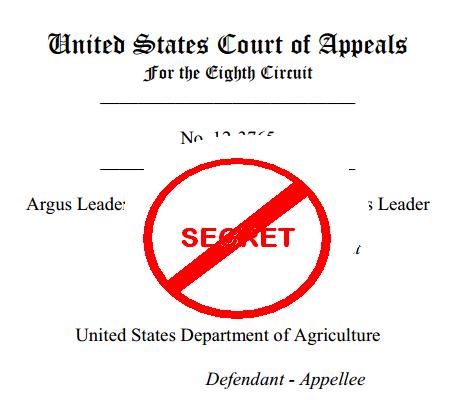A bill currently before the legislature seeks to amend the Minnesota Constitution to end constested elections for judges in the state.
Contrary to popular perception, judges in Minnesota are not appointed. They are elected. This comes as a surprise to most Minnesotans. When asked, they will typically opine that judges are initially appointed by the governor, but then must run for re-election. But that’s not exactly right. Article 6, Section 7 of the Constitution states:
The term of office of all judges shall be six years and until their successors are qualified. They shall be elected by the voters from the area which they are to serve in the manner provided by law.
Section 8 does, indeed, give the Governor the power of appointment, but only in the case of a vacancy:
Whenever there is a vacancy in the office of judge the governor shall appoint in the manner provided by law a qualified person to fill the vacancy until a successor is elected and qualified. The successor shall be elected for a six year term at the next general election occurring more than one year after the appointment.
While there are some differences (the length of the initial term) this system is essentially identical to how U.S. Senators are chosen. U.S. Senators are elected by the voters, but mid-term vacancies are filled by the governor. Yet nobody ever says that senators are initially appointed by the governor, but then must run for re-election, as they invariably say about judges.
The confusion comes largely because most judges retire prior to the expiration of their term. Section 9 gives the Legislature the power to provide for retirement, and Minnesota Statute 490.125 sets a mandatory retirement age of 70. Upon a judge’s retirement, a vacancy is created, and the vacancy is filled by the Governor.
As a practical matter, most Judges retire in the middle of their terms, either by choice, or because they are faced with mandatory retirement. Therefore, the Governor initially appoints most judges. Senators rarely retire mid term, and there is no mandatory retirement age for senators. This is why people rarely explain the senatorial election process the same way they explain the judicial election process. But the two processes are essentially the same: Both senators and judges are elected officials.
Interestingly, in the reports of the Minnesota Supreme Court and the Minnesota Court of Appeals, newly-appointed judges have a footnote next to their name which indicates that they are acting as judges pursuant to appointment. So even the Courts themselves seem to recognize that judges appointed by the governor are somehow not quite fully tenured judges.
The proposed amendment seeks to change the status of judges as elected officials. Under the amendment, they would really become what most people think they are already: They would be appointed by the governor. The amendment would make two changes. First of all, the governor would be limited to nominees presented by a judicial selection commission. The governor would not be able to nominate persons unless they received the un-elected commission’s approval.
The other big change would be in how judicial elections are carried out. Currently, any lawyer in the state can run for judge. If I want to, I can go pay the filing fee and run against any sitting judge. Or, in the rare cases where there’s a vacancy, I can seek employment for the next six years by running for the open seat. Most frequently, however, there is no challenger, and there is no open seat. On the back of the ballot, there’s a dizzying long list of incumbent judges. Each one has a bubble next to his or her name. And below the name, there’s another bubble next to a blank line for write-in candidates. If people look at the back of the ballot at all, they fill in the bubbles next to the names of the incumbents, even though those names are rarely familiar. On rare occasions, there’s another name, that of some brave lawyer who decided to pay the filing fee to get his or her name on the ballot. And that lawyer undoubtedly realizes that if he or she loses, it probably won’t be a good idea to appear before that judge for the rest of his or her legal career.
In the last few years, the U.S. Supreme Court has held that these brave challengers (as well as the incumbents) are, indeed, covered by the First Amendment. In other words, they are, indeed, allowed to say, “please vote for me.” They are even allowed to state their beliefs on matters of public concern.
The fact that the First Amendment still applies has caused a great deal of consternation in some quarters, and there are those who believe that the judicial election process will become “politicized.” There is undoubtedly some truth to this belief. As I have shown, judges are indeed elected officials. And an election is, by definition, a politicized process.
The amendment seeks to end this “politicization” by switching to retention elections. Instead of the back of the ballot having the names of judges and blank lines for write-ins, it will have the judge’s name and a question. The question will ask: “Shall Judge ____ be retained?” The voter will have the choice of two bubbles to fill in: Yes or No.
I think this is a bad system for a number of reasons. A good example of the most commonly cited reasons in opposition are stated by the Republican Liberty Caucus Minnesota statement. In general, I subscribe to the arguments made on that page.
But there’s another argument that is largely overlooked. Moving to retention elections would not do anything to de-politicize the process. If anything, retention elections will make the problem worse! And for proof, we need look no further than the Hawkeye State. Iowa’s experience proves that retention elections do not insulate judges from the whims of the voters. Instead, the retention election process makes judges more vulnerable to voters acting for weak and transient causes. Like Minnesota, the Iowa Constitution originally called for the election of judges. This was amended in 1962 to a retention system similar to what is now being proposed for Minnesota.
In 2009, the Iowa Supreme Court decided Varnum v. Brien. In that case, the court unanimously held that Iowa’s ban on gay marriage was unconstitutional. This decision was unpopular in some quarters. Three of the judges of the supreme court were up for retention in 2010: Chief Justice Marsha Ternus, Justice David Baker, and Justice Michael Streit. All three of them were defeated. In other words, it’s safe to say that Iowa’s 1962 retention amendment didn’t do much to insulate them from the whims of an electorate responding to what many would consider a weak and transient cause. In 2012, Justice David Wiggins, who also participated in the Varnum decision, was retained. This was partly because the Iowa bar was more successful in rallying behind him, but also because three years had passed. That’s the nature of weak and transient causes. They’re easily forgotten.
For those who believe that judges should be insulated from the whims of the voters, did the retention system work? I would say that it did not. And it is obvious to me why it didn’t work. A mob of angry Iowa voters doesn’t have to invest very much effort in voting the perceived bums out of office. The work has been done by the people who printed the ballot. All the angry voter has to do is fill in the box marked “no”. If enough people fill in the bubble, then the judge is removed from office.
In Minnesota and other states with contested judicial elections, it’s not so easy to remove a sitting judge. The action being protested must be sufficiently egregious for two things to happen. First of all, as in Iowa, a majority of the electorate has to agree that the judge must go. But before this can happen, some lawyer must place his or her name on the ballot. I have no intention of running against some judge before whom I might appear someday. And most other lawyers in the state would have similar trepidation.
In short, yes, there is the distinct possibility that in our imperfect system, judicial elections might become “politicized.” But the Iowa experience proves that our current system is the least worst. The framers of the state constitution (both parties, since Minnesota really has two constitutions, as I explain on page 3 of this paper) picked our current system for a reason, and I believe that we should keep it the way it is.
In a future post, I’ll explain another unintended consequence of retention elections, as explained to me by an Iowa attorney.
Are you an attorney looking for a free CLE credit? If so, please attend my free conference call CLE on March 24.



